On Tuesday 5 October Loches pharmacist Didier Raas led a fungi foray around the Etang du Pas aux anes, a manmade lake in the Forest of Loches. The purpose was to educate beginners, both those interested in the science of conducting biodiversity surveys and those interested in gathering wild mushrooms for the table. Unfortunately it poured with rain so we got soaked, and once in the forest under the trees it was so dark I wished I'd brought a torch. The rain was so noisy we couldn't hear each other speak.
Impressively every single one of the 15 people who had signed up for the outing turned up. I think it says a lot about how much the French value traditional country pursuits such as mushroom foraging.
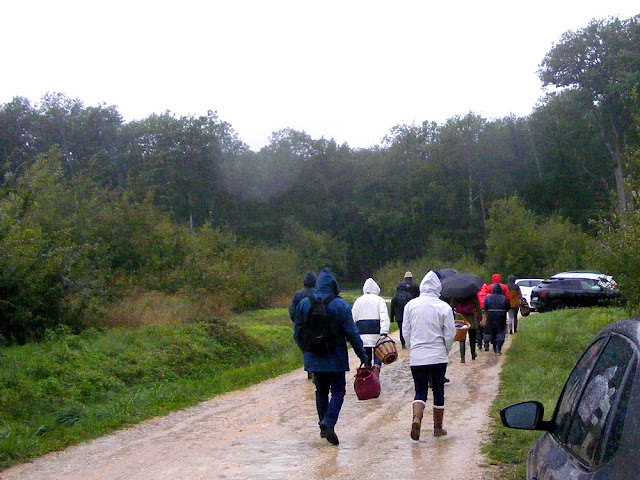 |
Walking into the forest.
|
 |
Didier explaining the parts of a mushroom and the terminology.
|
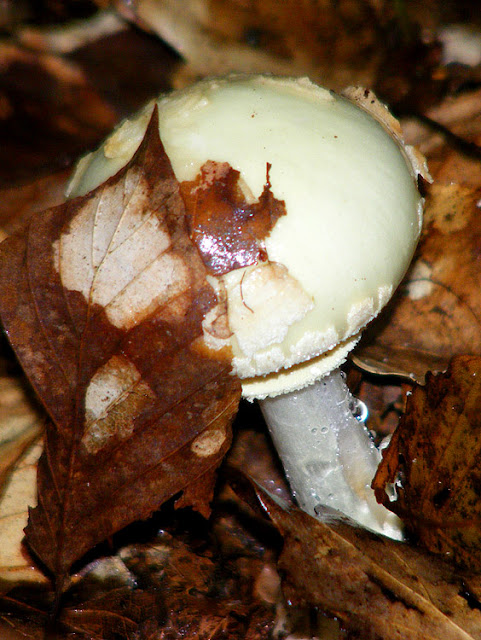 |
False Deathcap Amanita citrina (Fr. Amanite citrine).
|
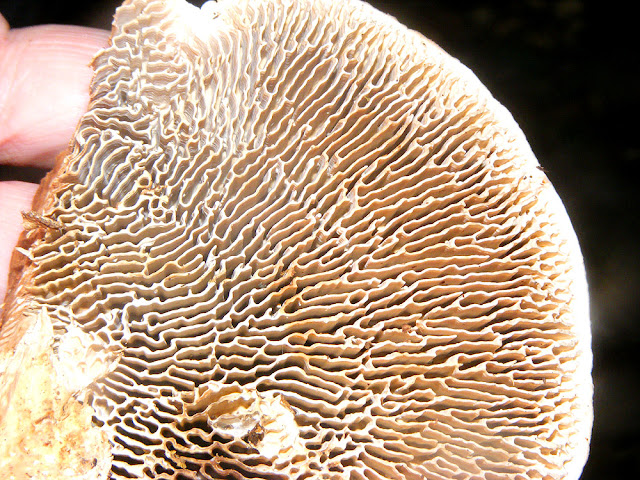 |
| The underside of an Oak Mazegill Daedalea quercina (Fr. Lenzite du chêne).
|
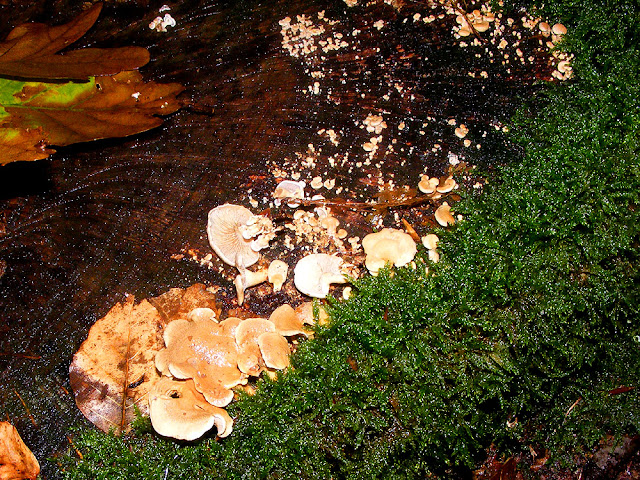 |
Bitter Oyster Panellus stipticus (Fr. Panelle astringente).
|
 |
Two small Hedgehog Mushroom Hydnam repandum (Fr. Pied de mouton), a prized edible species.
|
 |
Grey-spotted Amanita Amanita spissa.
|
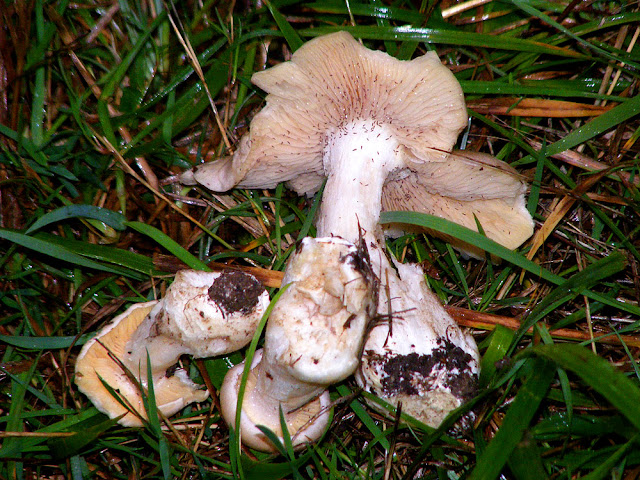 |
Livid Entoloma Entoloma sinuatum (Fr. Entolome livide). Syn E. lividum. The yellow gills are an important feature to identify this species, and the way it smells of flour. This is quite a toxic mushroom, responsible for lots of poisonings every year.
|
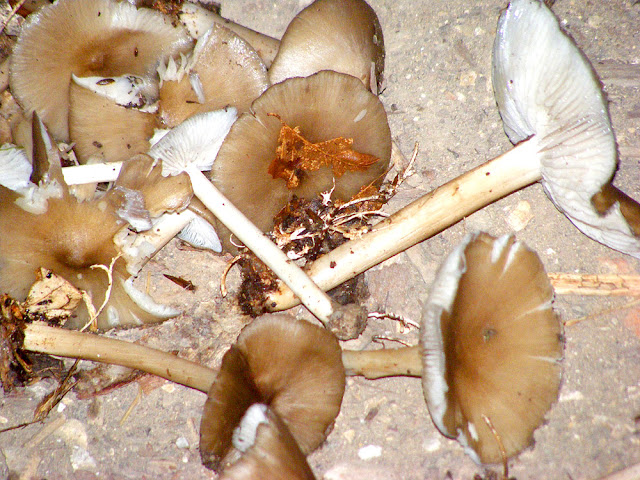 |
| Whitelaced Shank Mushroom Megacollybia platyphylla (Fr. Collybie à lames larges), easy to identify if you carefully extract all the mushroom (as is best pratice) because it has white 'roots' (mycelial fibres). |
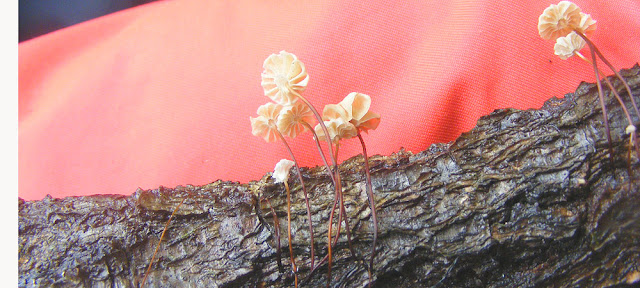 |
The charming and tiny Pinwheel Mushroom Marasmius rotula (Fr. Marasme petite roue).
|
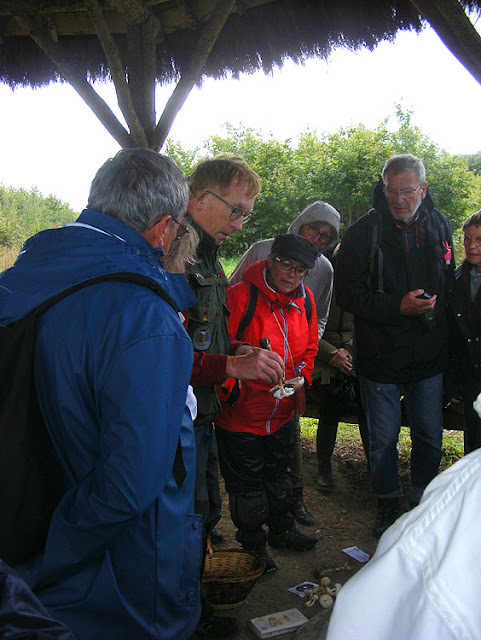 |
Didier talking about the difference between parasol (Lepiotes) and Amanita spp mushrooms. Both have white gills and stem rings, but only Amanita spp have volvic sacks at the base of the stem.
|
Didier's top tips for the day:
- the position of truffles in the forest can be discreetly marked by sowing the seeds of a particular plant.
- even wild boar won't eat Deathcap Amanita phalloides, but slugs can.
- 'cèpe' means 'onion head'.
- you can tell a polypore from a cep because you can’t pull the pores off a polypore.
- 4 species of cep – Edible, Dark, Summer, Pine.
- Russula spp and Lactarius spp stems click when snapped. Only Lactarius has milk.
- About 10 species found on the outing edible.
- Didier doesn't recommend eating any mushroom raw, even cultivated button mushrooms.
- Morels love wallpaper paste (cellulose) so check under the display panels that election posters are stuck to.












No comments:
Post a Comment